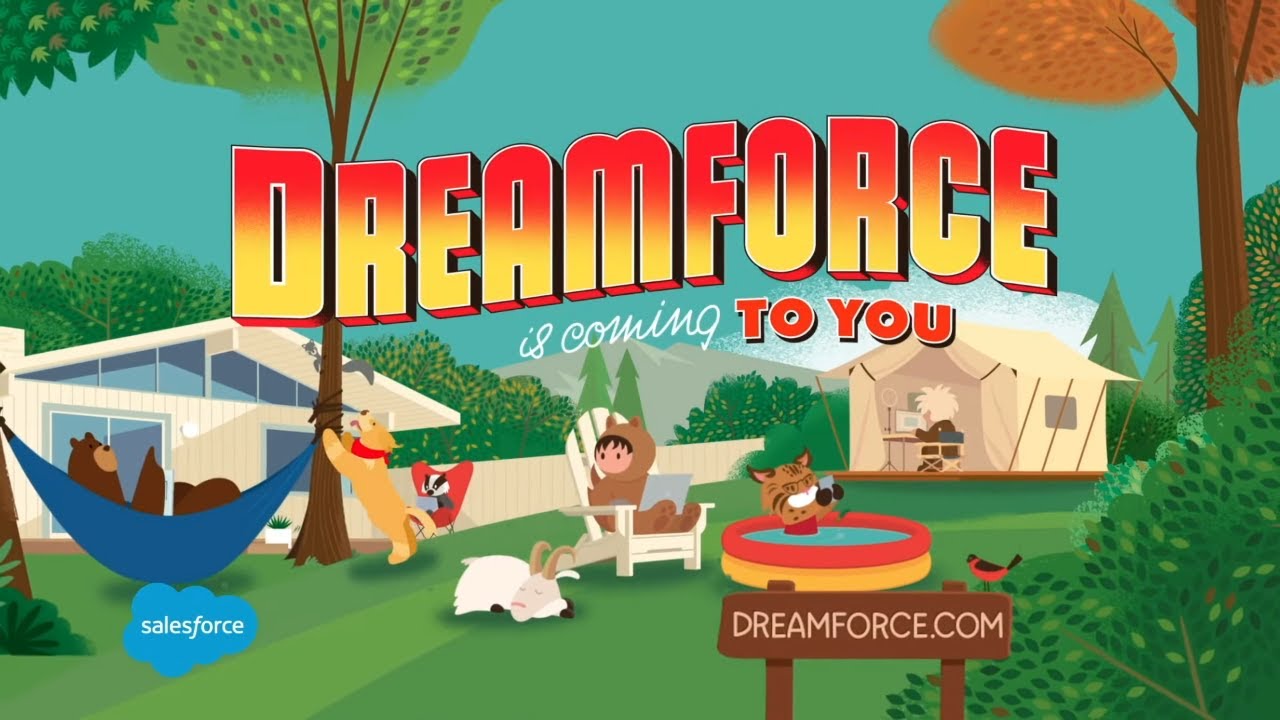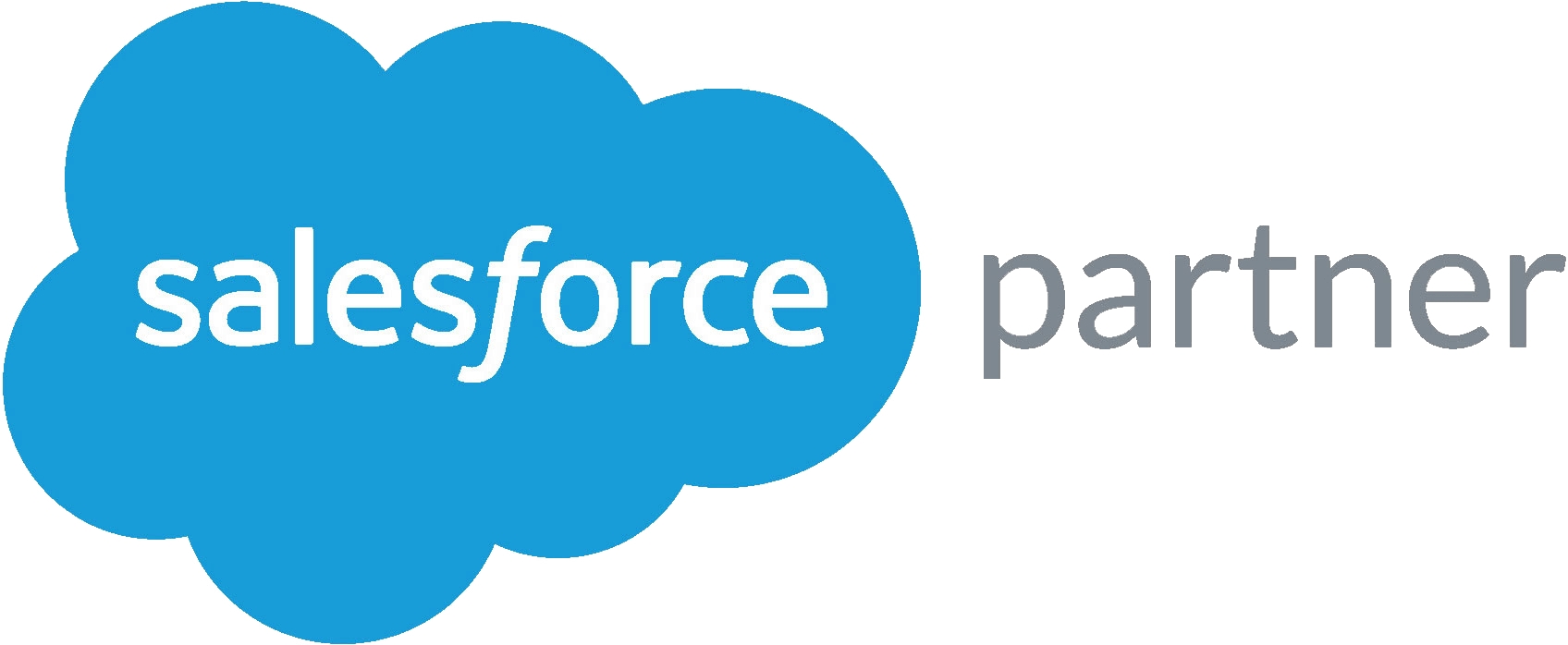Contact Centers
Event
Remote Working
Voice
Our 7 Takeaways from the Dreamforce 2020 Keynote
Natterbox Team

Salesforce Dreamforce 2020 came to us remotely from San Francisco this Wednesday. From the Slack acquisition to new products, here are our key takeaways.
A compelling keynote speech by Salesforce CEO Marc Benioff, Dreamforce delivered an unmistakable message: it’s business that drives change — and Salesforce is leading the way.
Beyond the extraordinary growth of Salesforce and the company’s high-profile partnerships, here are a few takeaways from Benioff’s keynote about where Salesforce — and customer experience — is headed in 2021.
1. The Slack Acquisition is All About End-to-End Digital Transformation
As expected, the news dominating Dreamforce 2020 was Salesforce’s $27.7 billion Slack acquisition. Early in the keynote, Slack CEO Stewart Butterfield briefly introduced the vision of the acquisition. Butterfield proposes that Slack brings the community — the social, deal-making part of business — to the data integration and management that makes business work.
On a high-level, this makes sense. It’s still too early to tell exactly how Slack will integrate with the suite of Salesforce products, but one thing is clear: Salesforce is investing in creating end-to-end solutions that will help them compete effectively against other cloud service providers. Salesforce now sees communication apps, and the data they generate, as a crucial part of their business.
2. The “Digital HQ” is the Future
The global coronavirus pandemic has spurred the shift to widespread remote work models. If the Slack acquisition announcement served as the event’s kick-off, the “future of work” was the running theme.
Stewart Butterfield put it this way: “This is a moment we’ll remember decades from now. This is like the IBM AS370. This is a moment to transform how we work so we’re not as reliant on the physical — we’ll have a digital HQ.”
Salesforce has leaned into the challenges of 2020 to exemplify what an all-digital workplace can look like. The company found that while it presented a range of ongoing technical and operational challenges, has only accelerated end-to-end digital transformation.
Salesforce COO Bret Taylor was sure to note: “We are in an all digital, work anywhere world. We’re living the future right now.”
3. Accelerating the Digital Imperative
2020 has certainly driven home the digital imperative for both B2B and B2C companies. Taylor put it bluntly: “If you don’t have a digital business, you don’t have a business.” We’ve seen this unfold for retailers who have had to migrate to e-commerce and multichannel models as brick-and-mortar stores shuttered across the world.
The switch to digital has been instrumental in preserving the success of the retail sector during a difficult year. Black Friday and “Cyber Week” sales shot up 60% year-on-year, and online sales are directly responsible for the “V” shaped recovery unfolding in retail.
The real test will be fully digitizing the retail customer experience — including support and sales functions — moving forward. For this, features like voice and video calling will play a key role in customer engagement — as will the tools that support them.
4. Einstein Automate and the Need for Valuable Data Insights
With the shift to digital as the central theme of the Dreamforce keynote, one of the key innovations on show was Einstein Automate, an end-to-end workflow automation solution.
Since unveiling Salesforce Einstein in 2016, the company has doubled down on its investment in AI. Einstein Automate builds on the tools announced earlier this year, like Einstein Call Coaching and Einstein Meetings, to simplify data integration and management while leveraging data analytics and improving the customer experience.
A key part of Einstein Automate is translating data from sales conversations into valuable, actionable business insights. Third-party tools that integrate with Salesforce will play a key role.
5. Salesforce Hyperforce and Flexible Solutions for a Remote-First World
Another innovation briefly introduced during the keynote was Salesforce Hyperforce. Hyperforce is Salesforce’s reimagining of its platform architecture across its cloud services. The watch-words for Hyperforce are “security,” “scalability,” and “agility.” Indeed, with more Salesforce customers working remotely than ever before, Hyperforce aims to provide reliable and secure access from anywhere.
Solutions like Hyperforce that enable radical flexibility will become increasingly important as business models and operations continue to adapt to social and economic disruptions caused by COVID-19.
6. A Rise in Direct Customer Engagement
With the pandemic’s arrival, luxury automotive company Bentley had to pivot from B2B to B2C sales rapidly and introduce the brand to a digital customer base. The company leveraged Salesforce Customer 360 and other Salesforce products to streamline the customer experience and drive growth.
For Salesforce, Bentley is a case study in moving to digital-first consumer engagement. Direct customer engagement via digital begins with effective data consolidation and management. With Salesforce as a partner, Bentley can supply sales reps and marketing departments the data they need to elevate customer experience.
In 2021 and beyond, solutions that optimize the customer experience through improved efficiency and personalization will be fundamental to driving business results. Natterbox’s Salesforce-integrated CTI includes automated, productivity-boosting tools and real-time data collection, enabling agents and salespeople to deliver a more efficient, personalized customer experience — helping to drive customer satisfaction rates, business development efforts, and, ultimately, the bottom line.
7. Creating Seamless Experiences Across All Touchpoints
Designed to be an out-of-the-box solution for all Salesforce apps, Einstein Call Coaching and Einstein Meetings improve sales and service calls by supporting interactions and uncovering business opportunities in real time. This way, retail and sales representatives can create personalized, tailored experiences for each customer.
Achieving sustainable business growth requires the integration of customer data across applications, while leveraging that data to effectively optimize sales performance.
Translating data into consistent customer experiences will depend not only on incorporation across Salesforce platforms, but also within third-party software that can integrate seamlessly with existing platforms. Here, live insights from voice calls — delivered by integrable solutions like Natterbox — is a game-changer.
As evangelical as ever, Benioff’s keynote points us toward a fully digital customer experience in the coming year. Dreamforce 2020 will be followed by DreamTX taking place December 14-17. We’ll be watching that closely for new updates!



